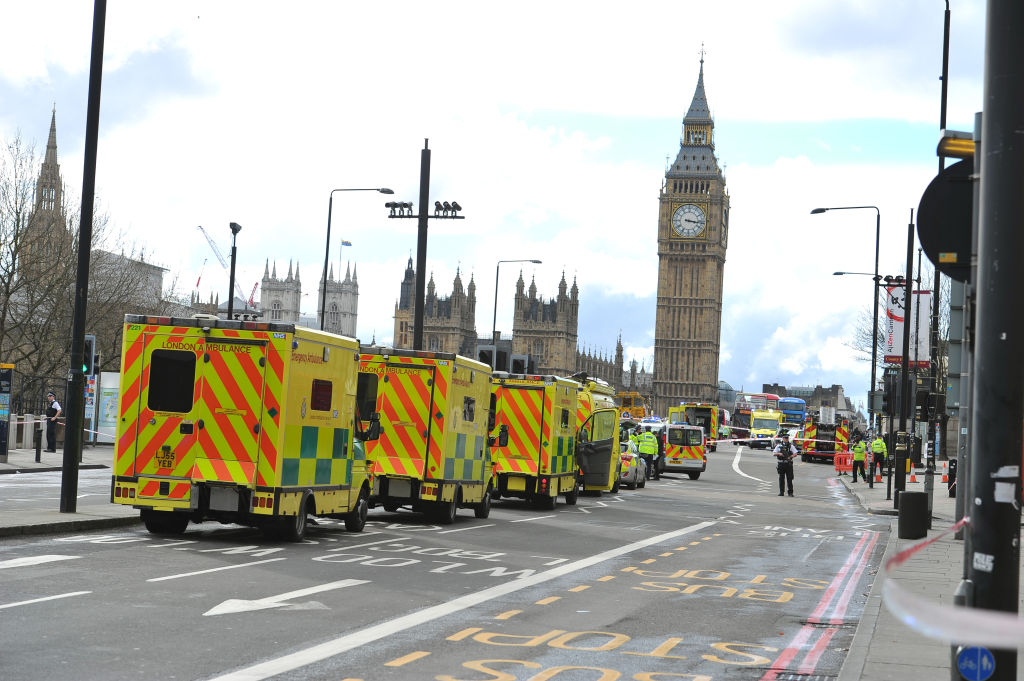

There are well over 1.2 billion cars on the road in the world today. Last year, 88.1 million were sold worldwide. It’s a number that boggles the mind. Today’s highly-publicized attack with a small passenger car on the Champs-Elysees in Paris follows an attack last night in London in which a man used a van to mow down a crowd of worshippers leaving a Finsbury Park mosque, killing perhaps one and injuring man more.
But the trend of the disturbed, angry, and insane using the most prevalent piece of heavy weaponry in the world to terrorize and murder people is not an innovation of the post-9/11 world; it has merely been refined since then. Vehicles have been used as bombs for as long as there have been vehicles—from the Spanish Armada to the most recent spate of attacks in Europe, the car has been a terror weapon of choice. The automobile’s current popularity as a weapon is partly because ISIS has specifically called for extremists to use cars (“If you are not able to find an IED or a bullet, then…run him over with your car…”). The car is convenient, powerful, and capable of terrible things in the wrong hands.
To date, none of the attacks have involved a hacked car, but that could be just a matter of time.
Herein, a gruesome (and very incomplete) timeline of terror on wheels.
1927: The Bath School Disaster
In Bath Township, Michigan, a really bad guy named Andrew Kehoe went on a rampage and killed 38 elementary school children and his wife, and injured scores of others before detonating a bomb in his Ford work truck, killing himself while trying to take out a bunch of policemen. It is, to this day, the deadliest school killing in US history, and probably the first documented attack of a vehicle begin used as a weapon in the United States.
1995: Tank rampage in San Diego

Army veteran Shawn Nelson, 35, stole a M60A3 Patton tank from a local National Guard Armory and went on a rampage in San Diego, crushing cars and any other object in his way before a police officer shot and killed him.
2005: University of North Carolina campus attack
A UNC graduate drove a Jeep Cherokee through a popular campus bar called “The Pit” to “avenge the deaths or murders of Muslims around the world.” No one was seriously hurt in the incident, but it was a harbinger of things to come.
2007: Failed attack at the Glasgow Airport in Scotland

In the first terror attack in Scotland since the Lockerbie bombing in the late 1980s, this ramming attack occurred in June of 2007, when a dark green Jeep Cherokee loaded with propane canisters drove into the glass doors of the Glasgow Airport terminal and caught fire. There were minimal injuries, though one of the attackers was killed in the blaze.
2009: Parade attack in the Netherlands

Live television captured one man driving a Suzuki Swift into a parade that included Dutch Queen Beatrix. Eight people were killed and 11 others were injured. The driver, who died the next day, told police was trying to kill members of the royal family, though none were hurt.
2014: Dijon and Nantes, France
In a harbinger of a much bloodier attack, these two back-to-back attacks were unrelated and, though the perpetrators both reportedly screamed “Allahu Akbar,” they weren’t considered part of a larger strategy, or even related to a major terror group. Eleven pedestrians were injured in Dijon and one person was killed the following day in Nantes.
July 2016: Truck attack on Bastille Day in Nice, France

Around 10:30 PM, just after the end of the Bastille Day fireworks display, a white, 19-ton Renault Midlum
cargo truck turned left onto the main beachfront Promenade des Anglais and drove relentlessly through a crowd of thousands of revelers. By the time the driver was killed by police, he had killed 87 people and injured nearly 500 in a horrific scene.
December 2016: Berlin, Germany, Christmas market attack
A young Tunisian rammed a Scania R 450
semi-trailer truck into a crowded Berlin Christmas market, killing 12 and injuring dozens in an attack claimed—along with just about every other recent attack—by ISIS. Incredibly, it was the first mass casualty attack by people claiming to be Islamic extremists carried out on German soil. The killer was slain by police after an international manhunt led authorities to Italy.
January 2017: Melbourne, Australia
A man with a history of mental health and drug abuse issues drove a Holden Commodore into a street crowded with pedestrians in Australia’s second-largest city,Melbourne, killing at least four people, including a child, and injuring around 15 others. The 26-year-old man was arrested, and police said the incident had no links to terrorism.
March 2017: Westminster Bridge attack, London
A 52-year-old man drove a Hyundai Tucson into pedestrians on the sidewalk along the south side of London’s Westminster Bridge, injuring more than 50 people and killing four. The car continued on to the perimeter fence of the Palace grounds, where the driver came to a stop, abandoned the vehicle, and ran into New Palace Yard, where he managed to fatally stab a police officer. He was then shot by law enforcement officials and died at the scene.